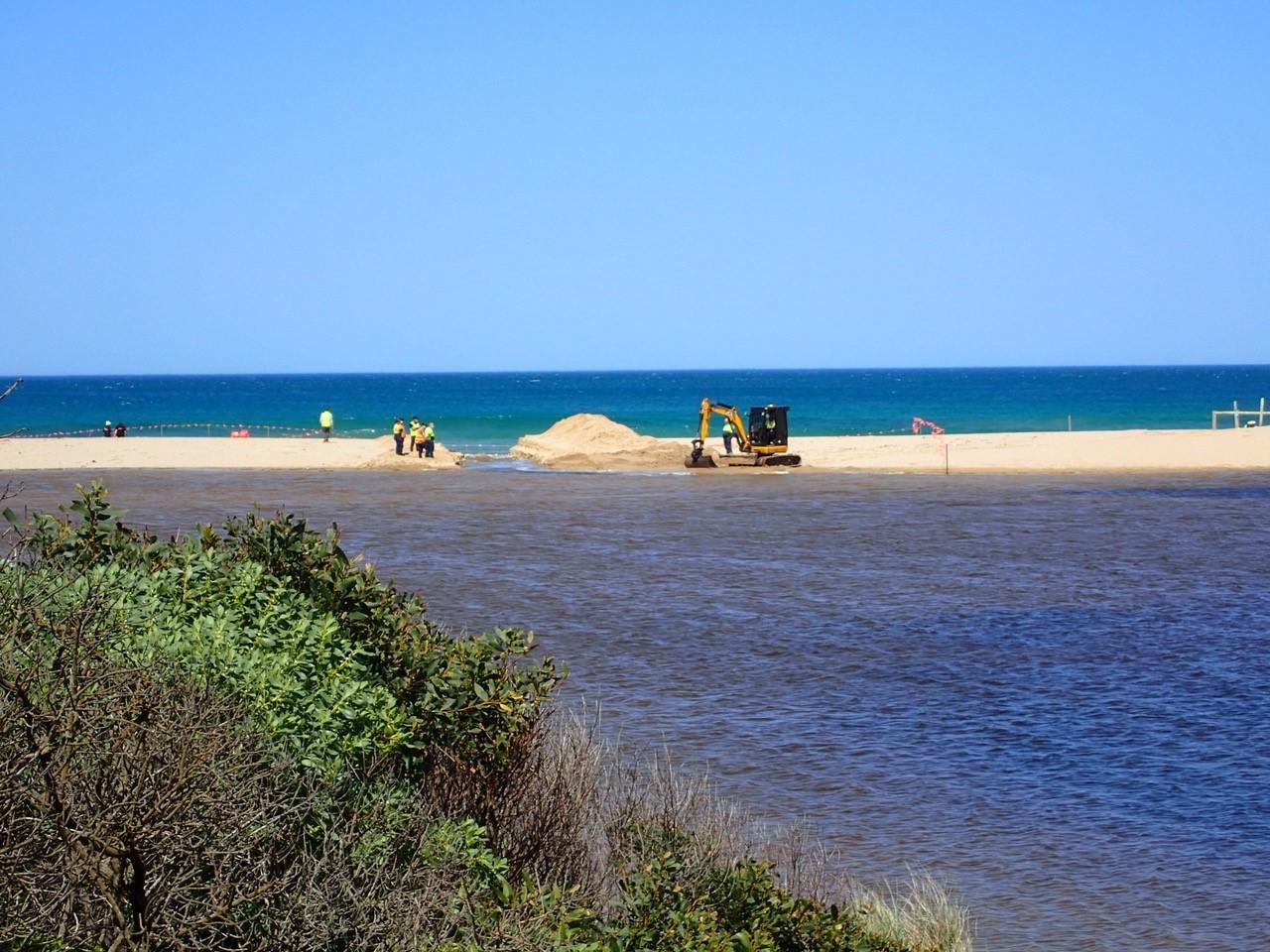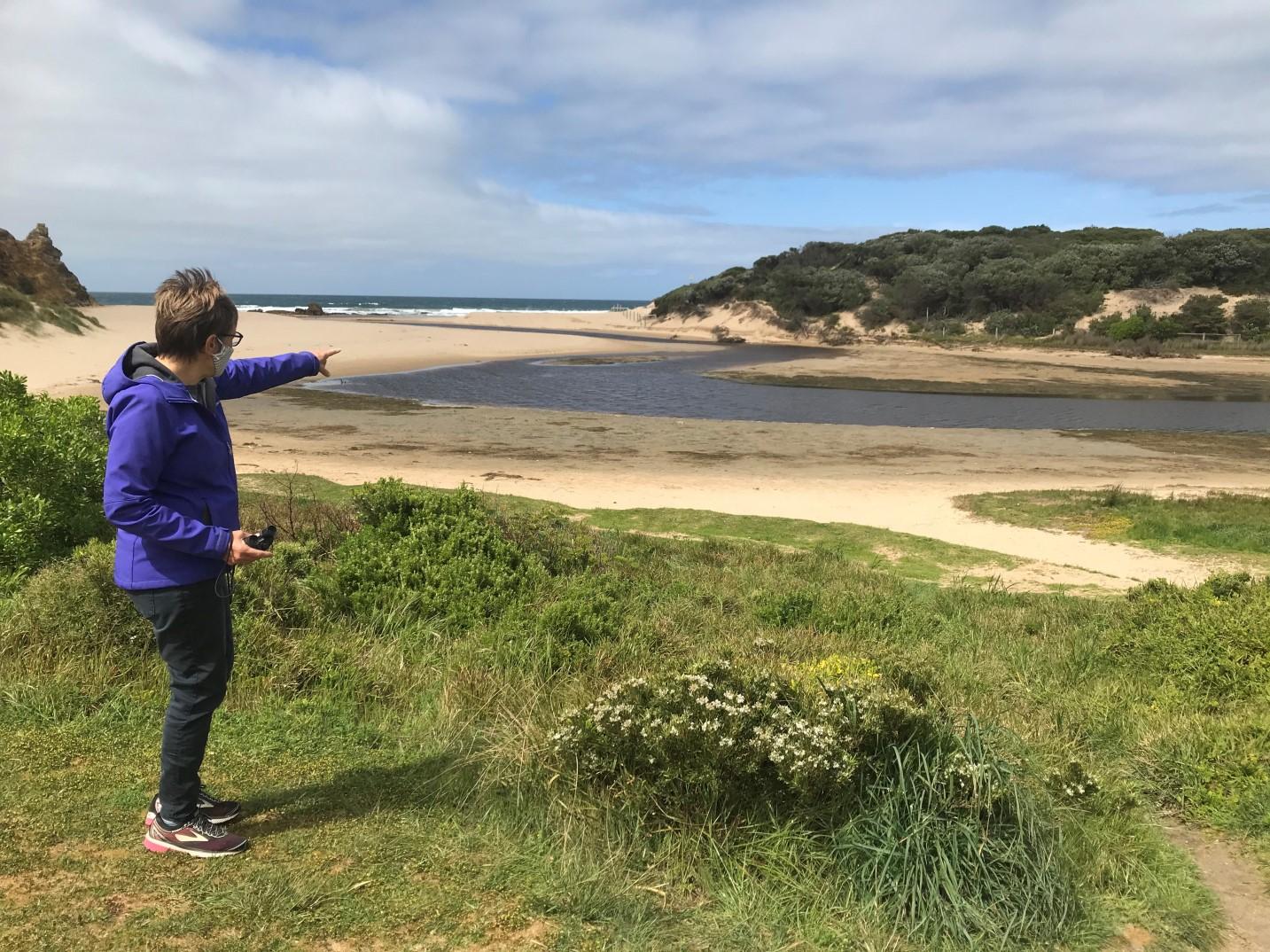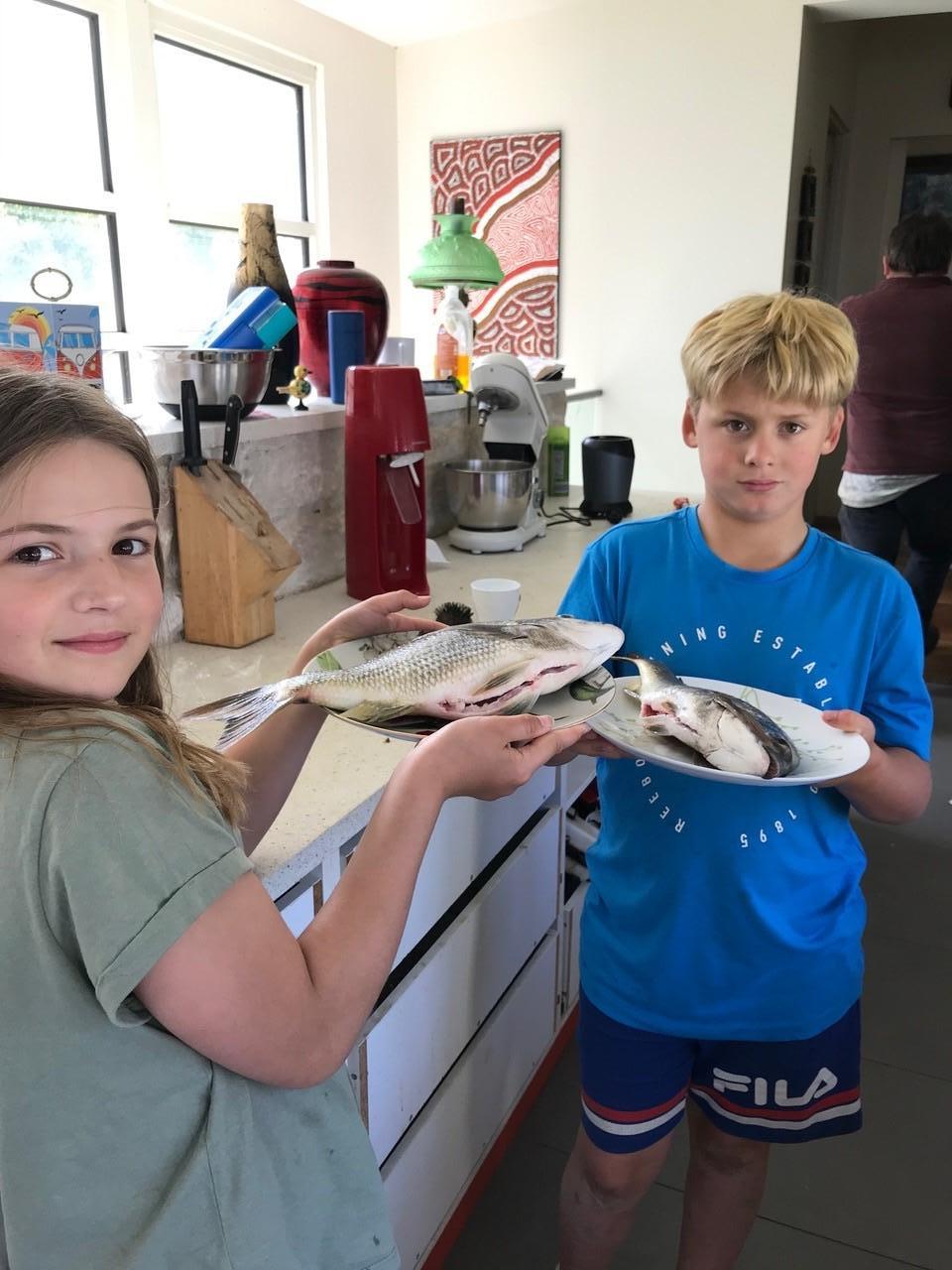
9 minute read
A Tale of Two Rivers
By Mary Bremner As the shovel of the digger bites into the sandbank, word spreads around town faster than a glass eel projects itself up the Painkalac Creek. “They’re opening the mouth!”
This heralds an Aireys Inlet tradition, where children (and some of their parents) race to the inlet with boards, to ride the undulating waves of the creek as it rushes through the freshly excavated opening. This event took place twice this year and the creek broke through the berm by its own power at least once. The artificial opening of the creek is the source of much commentary in the town, with stories told of days of old and a variety of opinions on its benefits to the waterway and the town. The village of Aireys Inlet grew up around the estuary of the small stream that flows from the foothills of the Otway Ranges. The creek formed the boundary between the tribal lands of the Wadawurrung people to the east and the Gadubanud people to the west. The name is derived from the Wadawurrung word “yaluk”, meaning creek or river. The remains of stone fish traps, that have on rare occasions been visible when the creek was reduced to its channel, are evidence of the first human intervention in the natural flow of the creek.
Advertisement
The Painkalac Creek is the habitat for an abundance of aquatic, bird, animal and plant life. It provides recreational activities such as bird-watching, canoeing, fishing, paddle-boarding and swimming. It completes the town’s
Some locals race to the Inlet to ride the rushing waves when the Painkalac Creek is opened.
scenic vistas of ocean, bush, mountains and stream.
This lovely stream is home to a population of southern shortfin eels whose reproductive cycle is one of the wonders of nature. The adult eels spend up to 20 years in the creek, before making the 3,000 km-long migration to the Coral Sea to breed and die. The young eels then find their way back to the Western Victorian waterways from which their parents originated. The town’s junior football team, ‘The Eels’, is named after these tenacious creatures.
The mouth of the creek is closed for much of the year by a sand berm pushed up by the ocean currents. An oxygen-rich layer of fresh water sits over a layer of oxygen-poor saline water. This stratification is at its most pronounced when water levels rise while the mouth is closed.
In its natural state, the water levels would gradually build up over winter, and after heavy spring rains, would flood the valley floor. With the right conditions – a combination of the force of the water flowing down the stream and the tides and ocean swells – it would breach the blockade of sand at the mouth, sometimes gently, sometimes with a rush.
It is in the nature of estuarine systems that they will be both open and closed throughout the seasons, and there is no preferred state. Different groups of plants and animals are adapted to thrive in open and closed conditions., Residents, such as David Quin, have memories of the creek that reach back as far as the 1950s and 60s. David recalls that the natural breaches were normally quite wide, skirting the western edge of the Inlet, naturally keeping the dunes in check. “I can recall waves flowing up the Inlet and breaking in front of what is now the carpark in Inlet Crescent. Eventually it would close and then fill, sometimes only partially, for summer,” said David. David recalled, “In a dry year, the water would get so brackish and unsavoury no-one would swim in it. If you did, it was not uncommon to be bitten by what we used to term ‘nippers’ – some sort of microscopic

bug which thrived in stagnant water. Slowly over summer the water would evaporate and all that was left was a narrow channel.” Town resident Peter McPhee’s memories also go back to these early days. He recalls a time when the opening resulted in a deep channel at the mouth, and schools of fish rushed in and out with the tides. There was clear sea-water up to River Road.
Local business owner Dave Jones remembers that the creek was always “boom or bust”. In the wet winters, which were the norm in those times, McKenzie’s farm would have a moat around it and the floods would “top dress” the paddock.
There are many stories about a time when the usual thing was for townsfolk to decide when the river should be opened. Local folklore has it that when Jack Richardson’s washing machine backed up (he lived where Onda is now) he would contact a townsperson with a digger or some men with shovels and the bank would be broken.
Many Aireys residents claim to have had a hand in these unauthorised excavations, which often silted up quickly.
Peter McPhee remembers when some visitors decided the inlet would be a good place for water-skiing, but this was a step too far for the locals and some shovel work soon ended their fun.
Dave Jones recalls an occasion when the opening resulted in fish and eel deaths. The fish come up to feed in the shallow flood water and can be trapped when the water drops quickly – Dave was able to pick up fish caught in the reeds.
But even in these days of derring-do, there were always debates about whether the mouth should be opened, when and by whom.
In 1978, the Aireys Inlet Water Board constructed a reservoir three kilometres upstream to supply potable water to the town and nearby Fairhaven. This allowed for the flow of the stream to be artificially controlled and since that time maintained at more desirable levels all year round. The reservoir, now managed by Barwon Water, was decommissioned as a water supply in 2016, but environmental flows that mimic the seasonal flushes have been maintained. This, together with the installation of sewerage infrastructure and the fencing of farming land away from the edge of the creek, have resulted in what is generally agreed to be a very healthy waterway. Management of the stream is a busy space. The major players are the Corangamite Catchment Management Authority (CCMA), the Surf Coast Shire Council, Barwon Water and the Department of Environment, Land, Water and Planning (DELWP). The CCMA is the caretaker of the health of the waterway, and it assesses the risks of opening. Local Council has the permit to conduct the openings and, under emergency provisions, may mobilise the digger if damage to property is imminent. Where possible, Barwon Water is requested to synchronise a release of water with an artificial opening to minimise the chance of fish deaths, by topping up the creek with oxygenated water.
Scientific reports on the creek and its estuary abound, including studies of the impact of artificial openings– some of them as part of broader studies of the waterways on our southern coast. Estuary Watch community volunteers regularly feed in information on the salinity, pH, oxygen levels, turbidity and temperature of the creek. The CCMA and the Surf Coast Shire Council are very concerned about the risks associated with artificial openings and approach them reluctantly. The depletion of the creek and its fringing wetlands can impact on the many water birds that call it home. The mouthopening might drain off the oxygenated surface water, meaning death to fish left in the oxygen-poor saltier water. On the positive side, an artificial opening sees the freshwater top layer drain off, followed by a flush of sea water on the high tide, resulting in the break down on the stratification and a re-oxygenation of the water. The movement of sand by the prevailing currents and tides ensures that the mouth rarely stays open for more than a few weeks.

Jayden Woolley, the Estuaries and Environmental Water Manager at the CCMA, says that an artificial opening will only occur if a risk-based assessment, which considers impacts on the environmental, social and economic values of the estuary, determines it is appropriate; and when weather and physical conditions allow for a safe and effective opening. They use a tool, developed through extensive research of estuarine systems, known as the Estuary Entrance Management Support System. The combined effect of the berm length, estuary water level and tidal elevation are taken into account. This meets community demand for a consistent and scientific approach to the artificial openings.
continued on page 8 >
A Tale of Two Rivers > continued from page 7
Inlet Crescent resident Liz Wood keeps a close eye on estuary openings. There is one matter on which the authorities and the locals all seem to agree – that, whether opened artificially or naturally, the creek has a mind of its own.

Inlet Crescent resident James Bell recalled events in 2007 when the creek flooded after heavy rain, and broke through naturally with an almighty boom, followed by a spectacular gush of water out to the sea.
“One year it gouged out a huge chunk of the dune, creating a massive sand cliff. I guess that’s one of the fascinating things about the river going out. Each time is a bit different and, beyond the initial act of breaking the river out, what happens next is entirely up to the river currents, the tides and the wind. It is fascinating,” said James. Inlet Crescent resident, Liz Wood, takes a keen interest in the management of the waterway. Liz prefers to see the mouth of the creek open naturally. After an opening late one spring, Liz was horrified by the muddy puddle that remained over summer and linked it directly with an ill-timed opening. Pressure from local residents such as Liz has led to an improvement in communication between the Council and responsible bodies, and the sharing of information with the broader community. There are, however, other schools of thought in the town. Dave Jones thinks the artificial openings are great for the health of the creek and that it needs a good flush on a regular basis to clear out debris and stop it from silting up where it shouldn’t. In Dave's view, it's not opened enough. He pointed to a recent opening, which he said resulted in the return of ducks and wading birds. There was even a sighting of a pelican on the estuary.
According to Dave, the bream fishing was always much better after a clean out – a fact borne out when a couple of Aireys children landed some beauties from the landing on Bambra Road a short while after one of this year’s openings.

Beautiful blinds & curtains designed for your lifestyle
Aireys Inlet children, Zoe (left) and Tay, caught these beauties from the landing on Bambra Road after one of this year’s river mouth openings.

The Painkalac Creek and its beautiful valley are prized attractions for both residents and visitors. The strongly held opinions about the management of the waterway are evidence of its valued place in our community.









